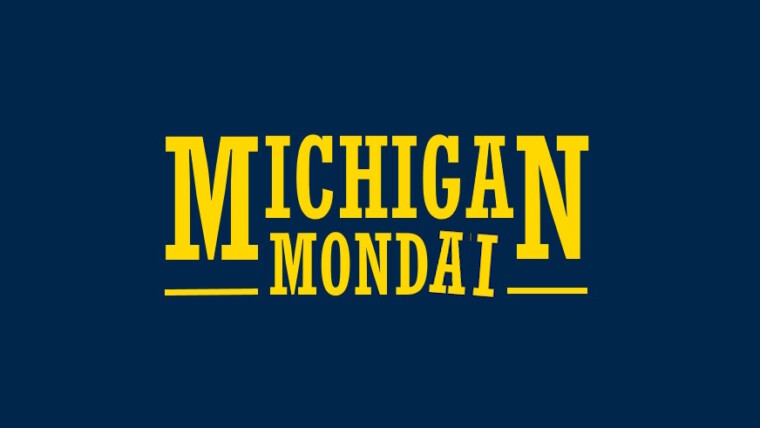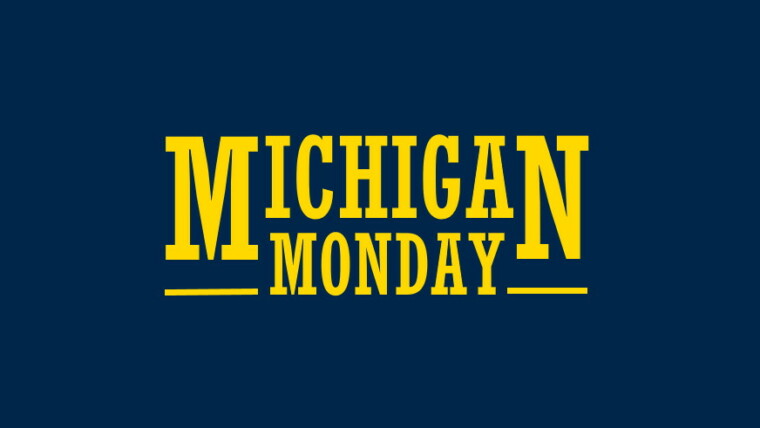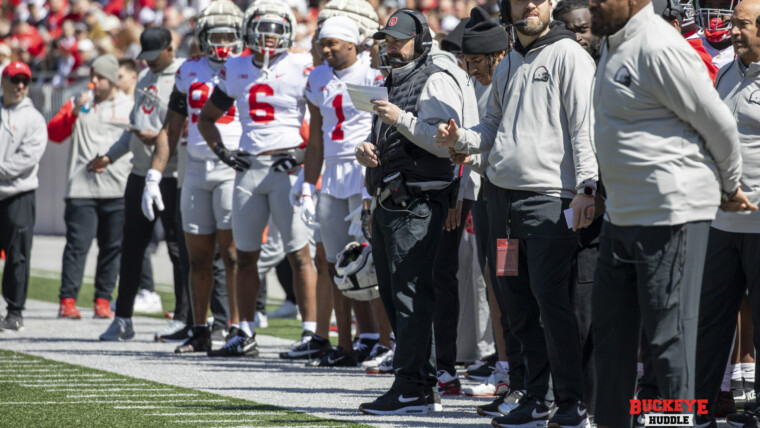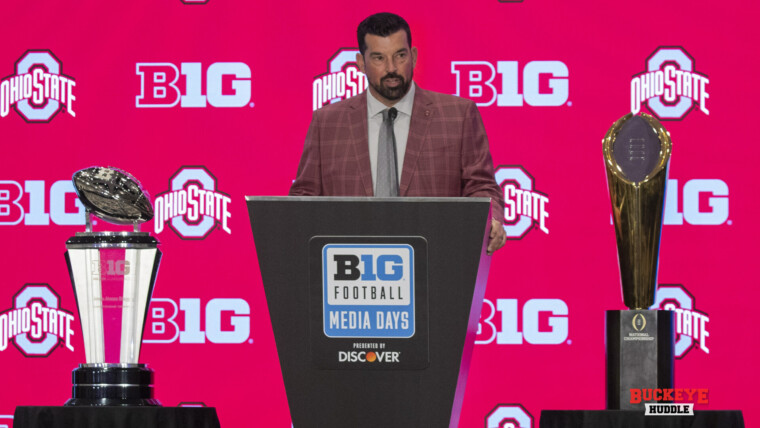Michigan defeated Michigan State 29-7 this past Saturday in Ann Arbor, giving the Wolverines just their fifth win over the Spartans in their last 15 attempts.
Jim Harbaugh now moves to 4-4 against Michigan State as Michigan’s head coach. Had the Wolverines simply declined to play MSU in 2020 like they did with Ohio State, he’d actually be above .500 against the Spartans right now.
This was almost your typical Michigan suffocation, which means the Wolverines put a pillow over your face and shout Insane Clown Posse lyrics at you until you grab the pillow and pull it tighter to your face because you just need the noise to stop. In Sparty’s case, however, they just kept singing along until they passed out.
Michigan led 13-7 at the half, but this never really felt like Michigan State was going to truly threaten. The Spartans couldn’t sustain success. Nor could they keep themselves from making costly mistakes and penalties.
Michigan State head coach Mel Tucker has time to get things fixed. And even if he doesn’t, it’s not like MSU can fire him any time soon.
Unless, of course, he continues to lose control of his players on and off the field.
When Michigan Was On Offense
The Wolverines rushed for 276 yards on 52 attempts (5.3 ypc). They were led by Blake Corum’s 177 yards on 33 attempts. He scored both of Michigan’s touchdowns, though one was a jet sweep touch pass. He also earned each one of those yards because his longest carry was just 17 yards. There was nothing cheap about his evening.
Corum may very well be the best player in the Big Ten, and Jim Harbaugh is making sure they get every ounce out of him they can. Corum is averaging 29 carries per game in Big Ten play. Michigan is out to prove that this is sustainable.
Donovan Edwards added 42 yards rushing on 10 carries. Quarterback JJ McCarthy rushed for 50 yards on seven attempts. Both players continue to be dynamic threats who aren’t as consistent as Corum, but just as dangerous in a one-off situation.
Michigan’s run blocking has been better, but Corum can make pretty good look great.
On the passing side of things, McCarthy completed 15-of-25 passes for 167 yards with one touchdown and no turnovers. This is the second-straight game he has set a career low in completions in a Big Ten game as a starter. His 60% completion percentage was also his low mark for the year, which is actually pretty good.
Michigan State’s pass defense has been mostly terrible this year, but has improved significantly since starting safety Xavier Henderson returned against Wisconsin the previous week. Over the past two games, the Spartans have given up a total of 308 yards passing and three scores. Three weeks ago in a 49-20 loss to Ohio State, the Buckeyes managed 377 yards passing and six touchdown tosses against MSU.
There wasn’t really anything impressive about the passing game this week. Of McCarthy’s 25 passes, nine of them went 10 or more yards down the field. Only three of them were completed. Fourteen of his passes were thrown seven yards or less. He completed 12 of them.
It is impressive that Michigan was able to run the ball as consistently as they did this past weekend despite no big chunk plays on the ground and no real downfield passing threat. Or maybe this is exactly what should be expected of a run defense that also gave up over 5 yards per carry to Ohio State, Minnesota, and Maryland.
When Michigan Was On Defense
This was another outstanding defensive day for the Wolverines. They held Michigan State to 37 yards rushing on 23 attempts (1.6 ypc). It is the fifth time they’ve held an opponent under 100 yards rushing this season, and the third time against a Big Ten foe.
The Spartans’ long run of the day by a running back was just eight yards. Anytime you can do that as a defense, you are winning up front almost every time.
Quarterback Payton Thorne completed 17-of-30 passes for 215 yards with one touchdown and one interception. The interception came on a nice play by safety Rod Moore to step in front of a pass down the middle of the field.
The Wolverines used a team effort to shut down talented wide receiver Jayden Reed. Reed had just four catches for 17 yards in this one. He was a non-factor. And this is one week after catching nine passes for 117 yards and a touchdown against Wisconsin. Reed also posted four catches for 67 yards and a score against Ohio State.

Michigan did struggle to defend 6-foot-4 Keon Coleman, who had five catches for 155 yards and a touchdown. He was a weapon downfield and the Wolverines had no answer for him. (Coleman had one catch for six yards against Ohio State.) Coleman is talented, so big games will happen, especially if Michigan’s focus was slanted more toward Reed.
It does make one wonder how the Wolverines will do against a similarly sized receiver in Ohio State’s Marvin Harrison. Half of the people doing the wondering will be excited about it. The other half will not.
Michigan had some trouble with the tempo on MSU’s first touchdown drive, which isn’t the first time that’s happened. Nobody has sustained tempo against them this season, however.
The Wolverines finished with two sacks and seven tackles for loss. They still only have two sacks by defensive linemen in non-obvious passing situations this season. That may or may not be a thing, but it’s definitely something I’m going to harp on until CJ Stroud gets sacked on four straight second-and-two situations in a month.
The Michigan Special Teams
I think maybe instead of worrying about Blake Corum’s workload, we should start asking Jim Harbaugh if Jake Moody needs a week off. Moody was 5-for-5 on field goal attempts this week, and is 9-for-9 the last two games. He has attempted multiple field goals in every Big Ten game this season.
The Wolverines attempted 25 field goals in 14 games last year. They already have 21 attempts in eight games this season.
Brad Robbins punted just once for Michigan. The return game did nothing of note.
Michigan State didn’t return a single kickoff. Moody put six of his eight kickoffs into the end zone for touchbacks.
What Does It All Mean?
It means that Michigan is well on their way to 11-0, but if they want to keep that zero in the loss column they’re going to need to get better in the red zone.
The Wolverines are converting just 50% of their red zone trips into touchdowns in Big Ten play. That’s 10th in the conference and behind such notable offenses as Northwestern and Indiana.
Despite their ability to run with both the running backs and the quarterback, as well as their love of the short passing game, this Michigan offense just isn’t cutting it in the red zone right now.
Some of it feels like fear. Harbaugh just doesn’t want the ball going too far into the end zone. Or even to the end zone.
On Michigan’s first trip into the red zone, they had a third and goal at the 8-yard line. They sent five receivers out, but only one actually had a route that went into the end zone. Each of the three receivers ran curl routes (see below), but only one route was actually sent far enough downfield to be a potential score.
Michigan State has one of the worst red zone defenses in the Big Ten. The Wolverines should have been able to do better.
But this isn’t actually a new issue.
Over the last two games, the Wolverines have scored touchdowns on four of their 11 red zone trips. In that span they are averaging 2.4 yards per carry in the red zone and have eight yards passing on nine drop-backs by JJ McCarthy.
Averages are obviously going to shrink when there is only 20 yards to work with, but should it really shrink this much?
Over the last three games in the red zone, McCarthy has produced 18 yards on 14 drop-backs (including one sack). He is 7-of-13 passing for 23 yards with two touchdowns and one interception. At one point this season I started to think about charting throws into the end zone but decided against it. Now I’m wishing I had.
The receiver room doesn’t appear to have the muscle to consistently catch passes in the end zone. Cornelius Johnson would seem like the best candidate, but he also fumbled this past weekend. It is also okay to wonder if JJ McCarthy doesn’t quite have the touch that is needed just yet.
But it also means there is still time to get it figured out. Michigan has shown they can run the ball, which is the key to success in the red zone. Having a mobile quarterback also helps because it gives the offense another weapon and the defense another headache.
It feels like Jim Harbaugh gave McCarthy a chance to stretch the field over the first half of the season, which didn’t work. So now Michigan is shrinking the field in order to stay on time and stay efficient. McCarthy is still deadly on the move and appears to throw better when he’s out of the pocket and not thinking too much.
I’m not sure if this offense is rounding into form or shrinking into form, but as long as they continue to run for 275 yards every week, it’s not going to matter.
If anybody wants my advice, I’d say sell out to stop the run and make JJ McCarthy beat you. You may lose spectacularly, but at least you’ll be able to sleep at night.
The Road To The Game
Sept 3 — Michigan 51 – Colorado State 7
Sept 10 — Michigan 56 – Hawai’i 10
Sept 17 — Michigan 59 – Connecticut 0
Sept 24 — Michigan 34 – Maryland 27
Oct 1 — Michigan 27 – Iowa 14
Oct 8 — Michigan 31 – Indiana 10
Oct 15 — Michigan 41 – Penn State 17
Oct 29 — Michigan 29 – Michigan State 7
Nov 5 — at Rutgers (Rivalry Game)
Nov 12 — Nebraska
Nov 19 — Illinois
Nov 26 — at Ohio State







11 comments
In Reportedly Relaxed Third-Party NIL Ruling, Ohio State Ready To ‘Plug and Play’
Ryan Day Big Ten Media Days Updates: Quarterback Battle Wide Open, Defense Looks Promising
Buckeye Football Notebook: ‘It’s definitely gonna be a different outcome this year’
Four-star Wide Receiver Jerquaden Guilford commits to Ohio State
The Impact: Ohio State lands key commitment from cornerback Jordan Thomas
The Impact: Kayden Dixon-Wyatt is latest prototype receiver to commit to Ohio State